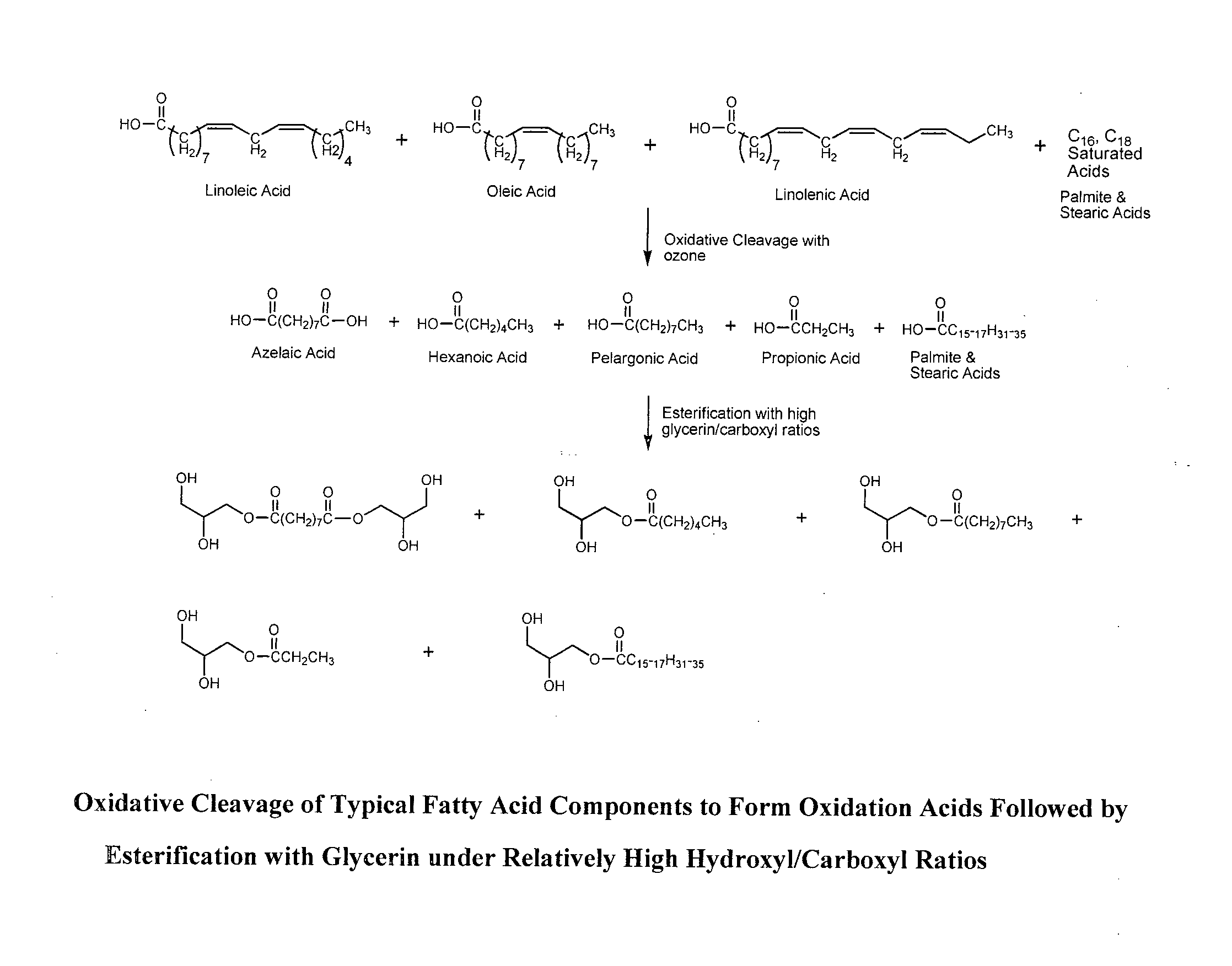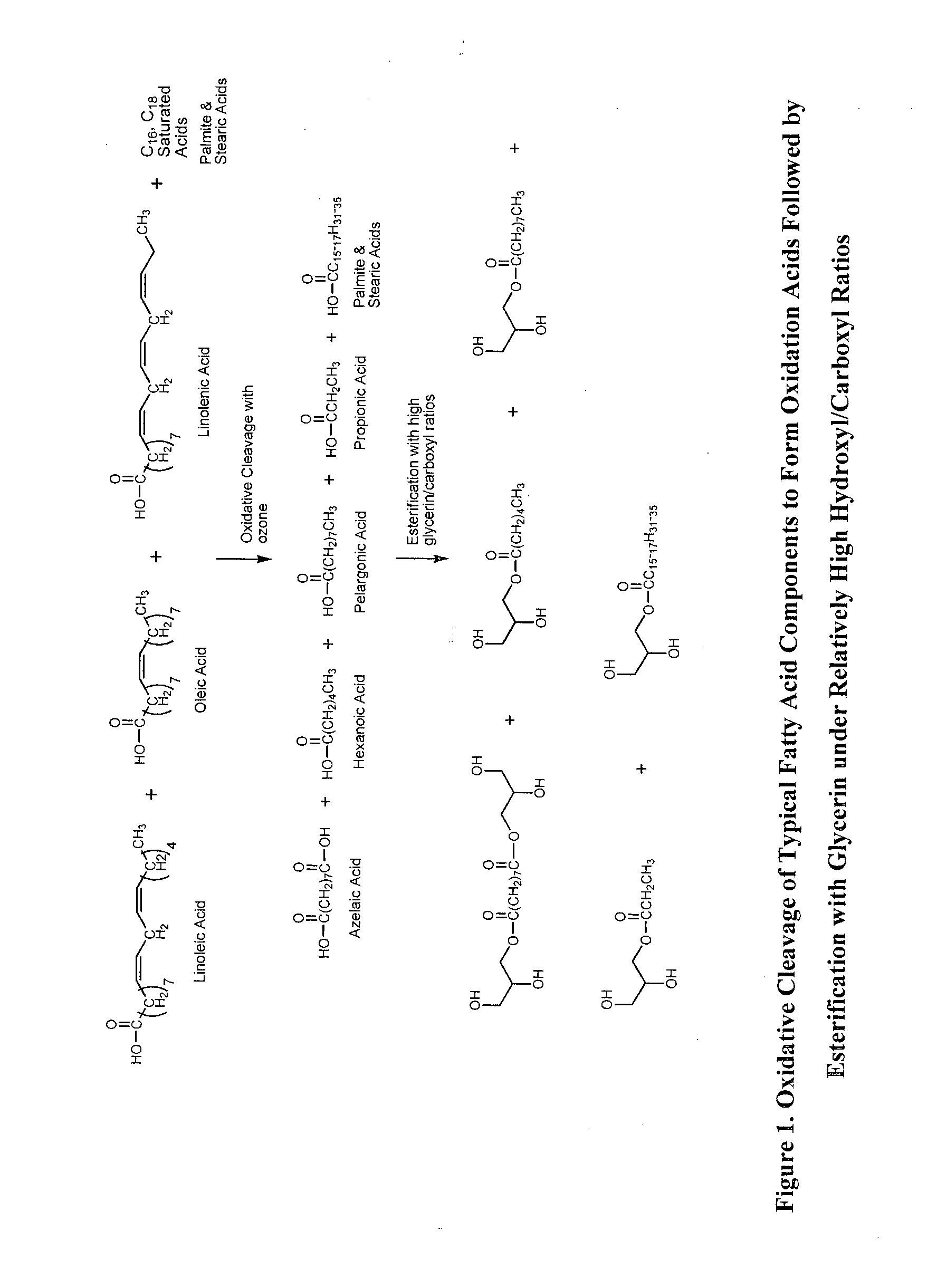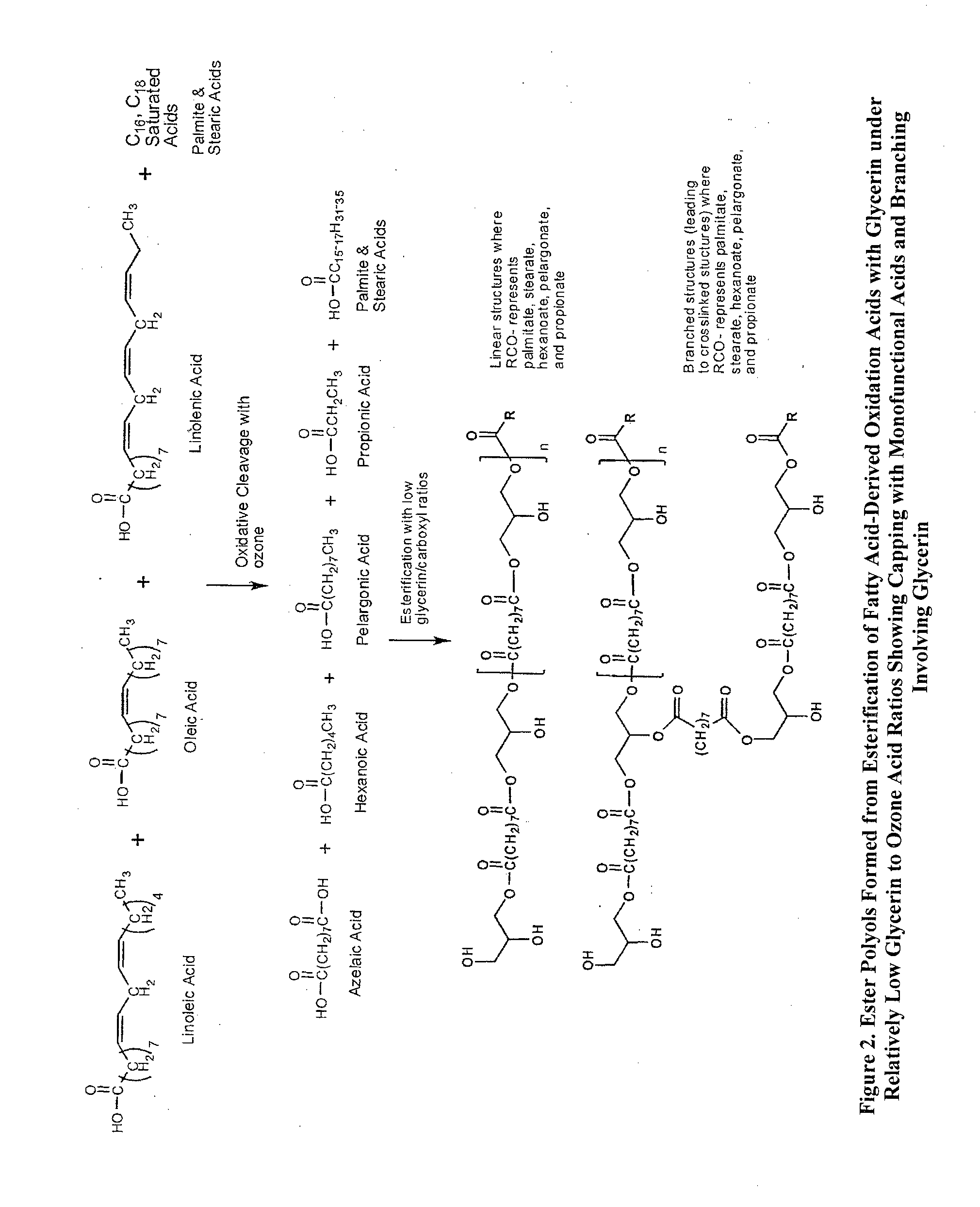Composition of matter polyols for polyurethane applications
- Summary
- Abstract
- Description
- Claims
- Application Information
AI Technical Summary
Benefits of technology
Problems solved by technology
Method used
Image
Examples
example 1
Preparation of a Palm-Based Rigid Foam Polyol
[0120]To produce palm-based rigid foam polyol, 80.36 g of azelaic acid, 3.69 g of acetic acid, 6.46 g of hexanoic acid, 58.29 g of nonanoic acid, 0.22 g of propionic acid, 6.06 g of palmitic acid, 4.15 g of stearic acid, 0.6 g of myristic acid, 6.23 g of lauric acid, 69.03 g of glycerin, 41.22 g of sorbitol and 0.17 g of tin (II) oxalate were weighed into a 500 ml three neck round bottom flask. The mixture was stirred using an overhead stirrer and heated to 180° C. to ensure all components dissolved and homogenized. The temperature was then increased to 215° C.-220° C. and the byproduct water was collected throughout the reaction. The reaction was monitored by measuring acid value (AV) and was considered complete when the AV reached below 3 mg KOH / g. The resultant polyol (labeled 53144-09-10) had a hydroxyl value (HV) of 378.8 mg KOH / g and AV of 1.04 mgKOH / g. The final product was a clear liquid.
Rigid Foam Polyols
Preparation of Palm-Based...
example 2
Preparation of Palm-Based Flexible Foam Polyol
[0138]To produce palm-based flexible polyurethane foam polyol, 361.62 g of azelaic acid, 16.62 g of acetic acid, 29.07 g of hexanoic acid, 332.88 g of nonanoic acid, 0.99 g of propionic acid, 27.27 g of palmitic acid, 18.66 g of stearic acid, 2.70 g of myristic acid, 28.05 g of lauric acid, 195 g of glycerin, 35.01 g of 2-methyl-1,3-propanediol and 0.63 g of tin(II)oxalate were weighed in a 1 L three neck round bottom flask. The mixture was stirred using an overhead stirrer and heated to 180° C. to ensure all components were dissolved and homogenized. The temperature was then increased to 210° C.-215° C. and the byproduct water was collected throughout the reaction. The reaction was monitored by acid value (AV) and was considered complete when the AV reaches below 3 mg KOH / g. The resultant polyol (labeled 53045-13-10) had an HV of 23.2 mg KOH / g and an AV of 0. The final product was a clear liquid.
Preparation of Polyurethane Flexible Foam...
example 3
Preparation of Palm-Based Polyurethane Coating Polyol
[0142]To produce palm-based polyurethane coating polyol, 62.95 g of azelaic acid, 3.55 g of acetic acid, 30.25 g of hexanoic acid, 42.13 g of nonanoic acid, 0.33 g of propionic acid, 13.6 g of palmitic acid, 1.6 g of stearic acid, 1.6 g of myristic acid, 68.5 g of trimethylolpropane (branched primary polyol), 25.5 g of 2-methyl-1,3-propanediol and 0.15 g of tin(II)oxalate were weighed in a 500 mL three neck round bottom flask. The mixture was stirred using an overhead stirrer and heated to 180° C. to ensure all components had dissolved and homogenized. The temperature was then increased to 210° C.-215° C. and the byproduct water was collected throughout the reaction. The reaction was monitored by acid value (AV) and was considered complete when the AV reached below 3 mg KOH / g. The resultant polyol (labeled 52781-32-30) had an HV of 207 mg KOH / g and an AV of 0.0. The final product was a clear liquid.
TABLE HProperties of Palm-based ...
PUM
| Property | Measurement | Unit |
|---|---|---|
| Temperature | aaaaa | aaaaa |
| Temperature | aaaaa | aaaaa |
| Length | aaaaa | aaaaa |
Abstract
Description
Claims
Application Information
 Login to View More
Login to View More - R&D
- Intellectual Property
- Life Sciences
- Materials
- Tech Scout
- Unparalleled Data Quality
- Higher Quality Content
- 60% Fewer Hallucinations
Browse by: Latest US Patents, China's latest patents, Technical Efficacy Thesaurus, Application Domain, Technology Topic, Popular Technical Reports.
© 2025 PatSnap. All rights reserved.Legal|Privacy policy|Modern Slavery Act Transparency Statement|Sitemap|About US| Contact US: help@patsnap.com



